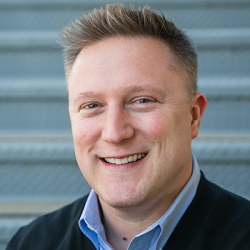“I was really excited about the project I designed, but then I got back to the reality of my classroom and school," said Joanne, a Grade 5 teacher. “I really could have used longer blocks of instructional time. I also didn’t have many other teachers in my school who understood what I was trying to do.”
“I wish our Assistant Superintendent had attended the training!" said Oscar, Middle School Principal. “She’s worried that PBL is going to negatively impact our test scores. The truth is, I think this type of learning will better prepare our kids for tests and any challenges in general! Not to mention, I’ve never seen my teachers as inspired as they are now.”
Robert, a high school biology teacher shared: “The PBL 101 training allowed my colleagues and I to collaborate and discuss teaching and learning more deeply than we ever had. We rarely have time in our district to work together like that.”
Over the past several years, our organization has had the opportunity to work across the US with an average of 15,000 teachers each year.
Through our PBL 101 Workshop, we’ve helped teachers design and plan for the successful implementation of high-quality Project Based Learning. While satisfaction with this training is common, our ultimate goal is that high quality PBL transforms classrooms and leads to even better student outcomes.
Sadly, we have data to suggest that many teachers who successfully design projects don’t always implement those projects, or try it once and don’t implement a second time. The quotes above come from PBL 101 participants reflecting on how their efforts to facilitate projects have been met with conditions that challenge rather than promote their success.
Increasingly, it’s become clear that beyond teacher capacity and preparation, leadership—both at the school and district level—plays a key role in the successful implementation and long-term sustainability of PBL.
Leaders need to understand how PBL can be a transformative approach to teaching and learning, while helping to create the conditions and structures necessary to facilitate and sustain the effort. In other words, when leaders understand the power of PBL, they will set a vision that supports this pedagogy and work hard to create time for teachers to collaborate, reflect, collaboratively assess student work, and iterate over time. In systems where these key conditions are not strategically designed and implemented, successful implementation is less likely.
For the last few years BIE has been working with 15-20 school districts around the United States to help them think more systemically about their implementation of PBL. Our work goes far beyond training all their teachers, Our work with districts has focused on support at three levels in the system: teachers, school leaders and district leaders, with the ultimate goal of increased student achievement, engagement, and the development of critical success skills. Work with teachers has focused on building their capacity to design and facilitate high quality PBL, based on the needs and readiness of their students and the content standards they are responsible for teaching. Work with school leaders and their leadership teams focuses on helping them create the conditions in the school to support teachers’ successful implementation and sustainability of PBL on campus.
District leadership is also focused on supporting capacity building and creating the conditions, working closely with school leaders to create coherence so that everyone knows how PBL integrates with other aspects of the district’s priorities and approaches to teaching and learning. In other words, the district leaders help ensure the “ecosystem” around schools is supportive of the practices and structures necessary for high quality PBL.
Our approach to deep systemic implementation of PBL at the district or “system” level, informed by the Hewlett Foundation’s Deeper Learning Leadership Elements, focuses on four main components shown in the images above. Let’s delve into each domain, beginning with a driving question to frame our work with partners when implementing PBL. I’ve also included some evidence or “look fors” you may see in systems working on each area.
Vision
How can we create a compelling, shared vision for PBL for all students?
Most schools take on a myriad of initiatives and often deal with competing priorities. Implementing PBL for all of your students could be seen as just another initiative, instead of being a unifying approach to teaching and learning. School leaders must ensure that everyone in the school community - teachers, students, families, and community members - have a shared understanding of what success looks like at your school and how PBL will help students achieve those outcomes.
Starting with a clear “why” for PBL is essential to help teachers and leaders launch and sustain PBL in their school. Whether your “why” is focused on improved student engagement, increasing student-centered teaching practices, or to ensure students’ develop essential success skills, knowing your why helps motivate and focus teachers when things get challenging.
Having a clear vision for PBL and what success will look like, helps schools monitor their progress and focus on continuous improvement over time. Without a shared vision, teachers will likely work hard, but in different directions! Evidence that a compelling vision exists in a school includes:
- Clearly articulated student outcomes, often in the form of a Graduate Profile
- School vision and mission statement includes or supports PBL as a key component of the instructional model
- A shared belief that that PBL is for all students, not just some students
- School communication and messaging cultivates a shared vision and purpose of PBL to their teachers, students, families and community members
- Students speak publicly about the value of PBL, and how they have grown as learners because of their PBL experiences
- Visuals or resources that call out school goals and priorities, with a connection to how PBL aligns to that vision
- Time allocated to ensure collaboration, iteration, and reflection related to PBL across the system
Culture
How can we develop and sustain a district-wide culture for all learners(students, teachers and leaders) that promotes collaboration, connectivity, and excellence through PBL?
Districts that have a culture conducive to collaboration, risk-taking, and reflection better support the successful implementation of PBL. Leaders must work collaboratively with staff to develop and sustain a district-wide culture for all learners (students, teachers, staff and leaders) that promotes collaboration, connectivity, and excellence through PBL. Policies, procedures, and practices support culture and structures allow for collaboration, shared leadership, communication, joy, and agency. (WFHF, 2017)
Evidence of a supportive culture can take many different forms, including:
- Clearly shared beliefs and norms, which are actively referred to and used during meetings
- Shared decision making structures, which are leveraged to guide PBL implementation
- Regularly scheduled time for collaboration across the system, and structures and policies that support and promote high quality PBL
- Recognition that celebrates success with PBL
- Structures focused on teacher and student agency, voice and choice
Capacity Building
How can we build the capacity (knowledge, skills, and mindsets) of leaders to lead the implementation and sustainability of high quality PBL, while supporting schools to create the conditions necessary for teachers to design and implement high quality projects?
The ongoing implementation of PBL requires that the adults in and around schools have the necessary skills, knowledge and mindsets required to lead PBL. It starts with districts’ building the capacity of school leadership teams to lead the implementation and sustainability of high quality PBL in their school. Capacity building requires ongoing opportunities for staff to develop their skills related to the design, facilitation, and iteration of PBL.
Evidence of this work may include:
- Development of site-based leadership teams to ensure a distributed leadership
- Master calendar and teacher schedules that allow for job-embedded professional development and collaboration
- School-based or district-wide instructional coaching support,
- Alignment of teacher evaluation systems to the Gold Standard PBL Project Design and Teaching Practices
- Performance assessment and grading practices that align to PBL
- Families and community members actively involved in supporting project
- Consistent approach to sourcing and selecting teachers and staff who will be able to facilitate and support PBL instruction; hiring pipeline (leaders and teachers) preference PBL experience and commitment
- Leadership development opportunities are targeted and ongoing
Continuous Improvement
How can we commit to an ongoing process of reflection, adaptation/iteration and growth to improve student learning outcomes through the use of PBL?
As our society continues to evolve and change, so too should our schools. Even in the most successful school systems, there is room for growth and improvement. System leaders must commit to an ongoing process of reflection, adaptation/iteration and growth to improve student-learning outcomes through the use of PBL. Student success in this domain can and should be assessed through multiple measures, including traditional standardized assessments, performance assessments, portfolios and defense, exhibitions of student work, student-led conferences, and self-assessment. At the adult level, many of these same types of structures can be applied to highlight their learning and growth. Structures must be created, such as school and classroom walkthroughs, to gather school-wide information about the quality of PBL instruction and leadership, progress on student learning outcomes, and other promising practices to drive decision making about teaching and learning.
Further evidence of continuous improvement may include:
- Periodic and planned self-assessments or reflections for the adults in the system
- Systematic use of protocols to reflect on, monitor, evaluate, and share evidence of implementation of high quality PBL
- Structures that support reflection and sharing, such as walkthrough or other means to gather school-wide information about the quality of PBL instruction
- Leaders are networked to create a community of practice to learn with and from
- Differentiated professional development that cultivates teachers’ and leaders’ strengths and ongoing understanding of PBL
Our district development team uses these four domains and driving questions to support our district partners in their journey of PBL implementation and sustainability. The process takes strategic planning and time, as elements of all four domains are always in need of attention. This is why we support our partners in continually taking stock of the level of readiness in different aspects of the system. Identifying areas of strength and areas for growth are critical to the progression of PBL implementation.


